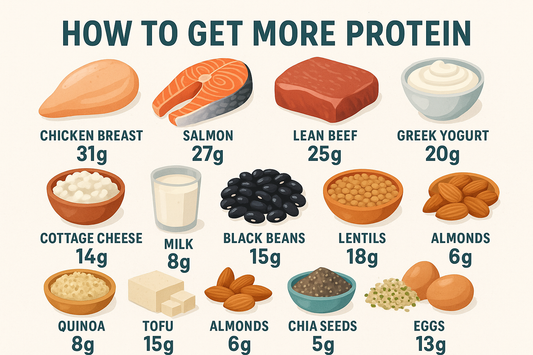The Best Guide to Perfecting Wide Grip Pull Ups for Strength Training
Introduction to Wide Grip Pull Ups
Wide grip pull ups are a compound exercise that targets the latissimus dorsi, teres major, and other back muscles, making them an essential part of any strength training routine. This exercise is performed on a pull up bar with a wider grip than shoulder width, which increases the activation of the lat muscles. Wide grip pull ups are a key component of bodyweight exercises, engaging multiple muscle groups and improving metabolism. They are also a great exercise for building lean muscle mass and improving cardiovascular capability. They can be modified to suit different fitness levels, from beginners to advanced athletes, by using resistance bands or adjusting the grip width.

Equipment and Setup
To perform a wide grip pull-up, you will need access to a pull-up bar that is sturdy and can support your body weight. The bar should be at a height that allows you to hang from it with your feet flat on the floor or on a step, with your arms fully extended and your hands gripping the bar. The grip width for a wide grip pull-up is typically wider than shoulder-width apart, which means your hands will be positioned farther apart than they would be for a standard pull-up. This wider grip targets the latissimus dorsi muscles more effectively, making it an excellent exercise for building upper body strength, particularly in the back muscles.
Muscles Worked
- The primary muscles worked in wide grip pull ups are the main muscles involved in the movement, including the latissimus dorsi, teres major, and biceps brachii.
- The latissimus dorsi is the largest muscle in the back, and it is responsible for extension, adduction, and rotation of the shoulder joint.
- The teres major muscle assists in adduction and rotation of the shoulder joint, while the biceps brachii helps with elbow flexion.
- Additionally, the teres minor plays a role in stabilizing the shoulder during the exercise.
- Other muscles involved in wide grip pull ups include the forearm muscles, mid back muscles such as the rhomboids and lats, upper back muscles, and shoulder blades.
Benefits and Variations
Wide grip pull ups offer several benefits, including increased muscle mass, improved grip strength, and enhanced upper body strength. They can be varied to target different muscle groups by using different grips, such as the close grip pull ups, which target the biceps and upper chest. Incorporating chin ups as a complementary exercise to wide grip pull-ups is particularly effective for targeting the biceps, core, and pectorals, while also engaging the lats to a lesser extent. Neutral grip pull ups are another variation that can help reduce strain on the shoulders and wrists. Lat pull downs are an effective alternative for targeting the back muscles, especially for those who might not have access to a pull-up bar. Wide grip pull ups can also be modified to suit different fitness levels, such as using a resistance band or adjusting the grip width.
How to Perform a Wide Grip Pull Up
To perform a wide grip pull up, start by hanging from a pull up bar with a pronated grip, with your hands slightly wider than shoulder width, ensuring you achieve a full extension at the bottom of the movement.
Engage your core and pull yourself up until your chin is above the bar, keeping your elbows close to your body. Using a supinated grip (palms facing you) or a neutral grip (palms facing each other) can affect muscle engagement, particularly in the biceps and overall stability.
Slowly lower yourself back down to the dead hang position, taking care not to swing or jerk your body.
Focus on proper form and technique throughout the entire movement, and avoid using momentum or kipping.
Warm-Up Exercises
Before starting your wide grip pull-up workout, it’s essential to warm up your muscles to prevent injury and improve performance. A good warm-up routine should include exercises that target the muscles used in the wide grip pull-up, such as the latissimus dorsi, biceps, and forearm muscles. Some effective warm-up exercises include:
- Light cardio such as jogging in place or jumping jacks to get your blood flowing.
- Dynamic stretching for your arms, shoulders, and back, such as arm circles, shoulder rolls, and torso twists.
- Specific exercises like push-ups, rows (using dumbbells or a resistance band), and bicep curls to engage the upper body muscles.
- Hanging from the pull-up bar with an overhand grip for 10-15 seconds to engage your latissimus dorsi and other back muscles, followed by slowly lowering yourself down to a dead hang position.
Form Tips and Safety Precautions
Proper form is essential when performing wide grip pull-ups, as it is a hard exercise that requires proper form to prevent injury and ensure that you are targeting the correct muscle groups.
Keep your shoulders down and away from your ears, and engage your core to maintain a stable position.
Avoid swinging or jerking your body, and focus on slow and controlled pulling movements.
Use a full range of motion, and avoid cutting the movement short or using partial reps.
Consider incorporating reverse grip pull-ups to increase bicep activation and engage multiple muscles for stability and strength within the shoulder and arm.
Progressing to Wide Grip Pull Ups
If you are new to pull ups, start by using a resistance band or adjusting the grip width to make the exercise easier.
As you build strength and endurance, you can progress to wider grip pull ups and aim to perform as many reps as possible over time.
Negative pull ups are another way to progress, where you start at the top of the movement and slowly lower yourself down.
Focus on progressive overload, and aim to increase the weight or resistance you are using over time to lift more weight. Incorporating wide grip pull-ups into your workout routine can significantly enhance your overall strength and fitness.
Nutrition and Recovery
Proper nutrition and recovery are essential for building muscle and strength, particularly when performing wide grip pull ups. Recovery exercises should target the same muscles worked during wide grip pull-ups. Focus on consuming a balanced diet that includes plenty of protein, complex carbohydrates, and healthy fats. Ensure that you are getting enough rest and recovery time, and aim to get at least 7-8 hours of sleep per night. During specific recovery exercises, make sure to position the other foot correctly to maintain balance and stability. Use supplements such as protein powder and creatine to help support muscle growth and recovery.

Mental Preparation and Focus
Mental preparation is crucial for successfully performing wide grip pull-ups, especially if you’re just starting out or working towards increasing your rep range. Here are some tips to help you mentally prepare and focus:
- Set Clear Goals: Define what you want to achieve with your wide grip pull-up training, whether it’s increasing the number of reps, performing a certain number of sets, or mastering the proper form.
- Visualize Success: Imagine yourself successfully performing the wide grip pull-up. Visualization can help build confidence and mental toughness.
- Focus on Form: Concentrate on maintaining proper form throughout the exercise. This includes engaging your core, keeping your body straight, and using a full range of motion.
- Breathing Techniques: Practice deep, controlled breathing to help manage stress and maintain focus during your workout.
- Positive Self-Talk: Encourage yourself with positive affirmations. Believe in your ability to perform the exercise and celebrate small victories along the way.
- Consistency and Patience: Understand that building strength and mastering the wide grip pull-up takes time. Stay consistent with your training, and be patient with your progress.
Advanced Techniques
Once you have mastered the basic wide grip pull up, you can try more advanced techniques such as weighted pull ups or plyometric pull ups. Using an underhand grip can also be beneficial for bicep activation and variation in your training.
Weighted pull ups involve adding weight to your body, such as a weight belt or dumbbells, to increase the resistance. For advanced techniques, using a grip wider than shoulder-width can enhance muscle activation, particularly in the latissimus dorsi, and improve upper-body strength.
Plyometric pull ups involve explosive movements, such as clapping or releasing the bar, to increase the intensity.
Focus on proper form and technique, and avoid using excessive weight or resistance that can put you at risk of injury.
Troubleshooting Common Issues
- Common issues when performing wide grip pull ups include struggling to get past the sticking point, or experiencing pain or discomfort in the shoulders or wrists, which can be more challenging compared to standard pull ups.
- To overcome these issues, focus on proper form and technique, targeting the main muscles involved in the movement, such as the lats and biceps, and avoid using momentum or kipping.
- Use a resistance band or adjust the grip width to make the exercise easier, and focus on progressive overload to increase strength and endurance.
- Consult with a fitness professional or coach if you are experiencing persistent pain or discomfort.
Conclusion
Wide grip pull ups are a compound exercise that can help build upper body strength, particularly in the back and shoulders.
They offer several benefits, including increased muscle mass, improved grip strength, and enhanced upper body strength. Keeping your muscles engaged throughout the exercise is crucial for maximizing these benefits.
Focus on proper form and technique, especially the mechanics involved in pulling movements, and avoid using momentum or kipping.
With consistent practice and progressive overload, you can master the wide grip pull up and achieve your fitness goals.















